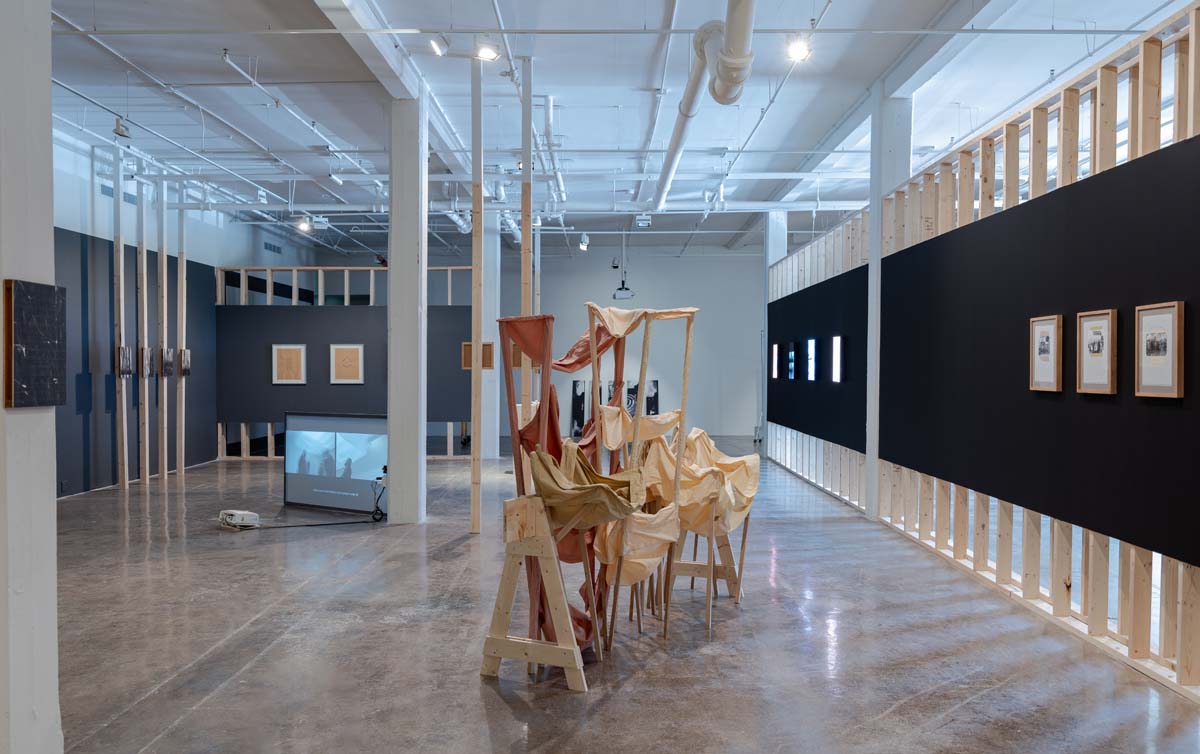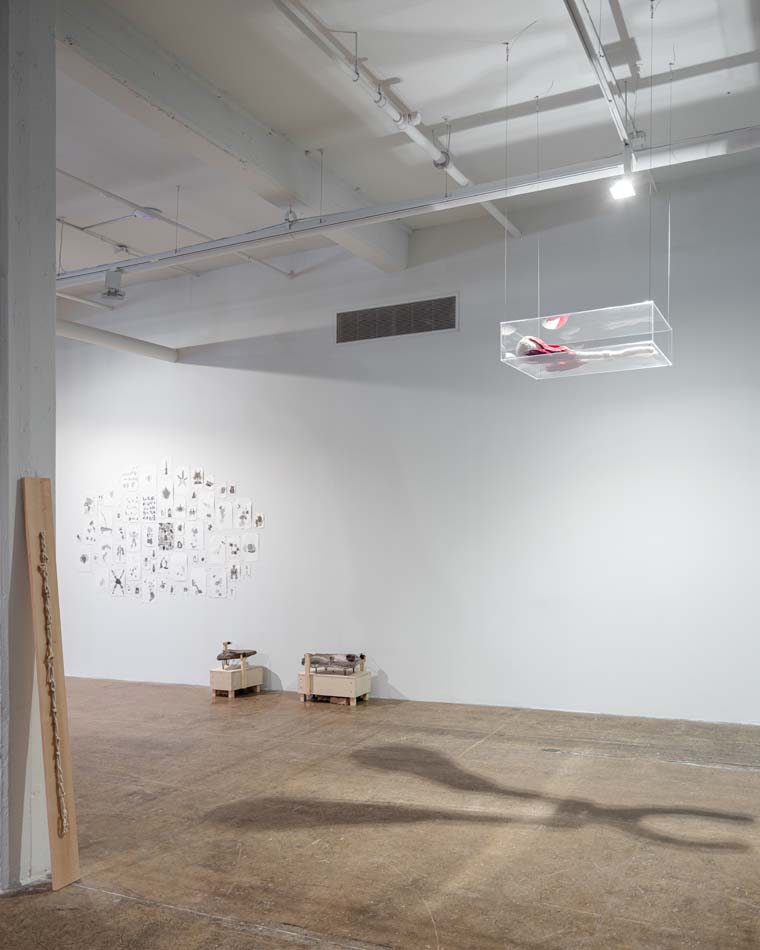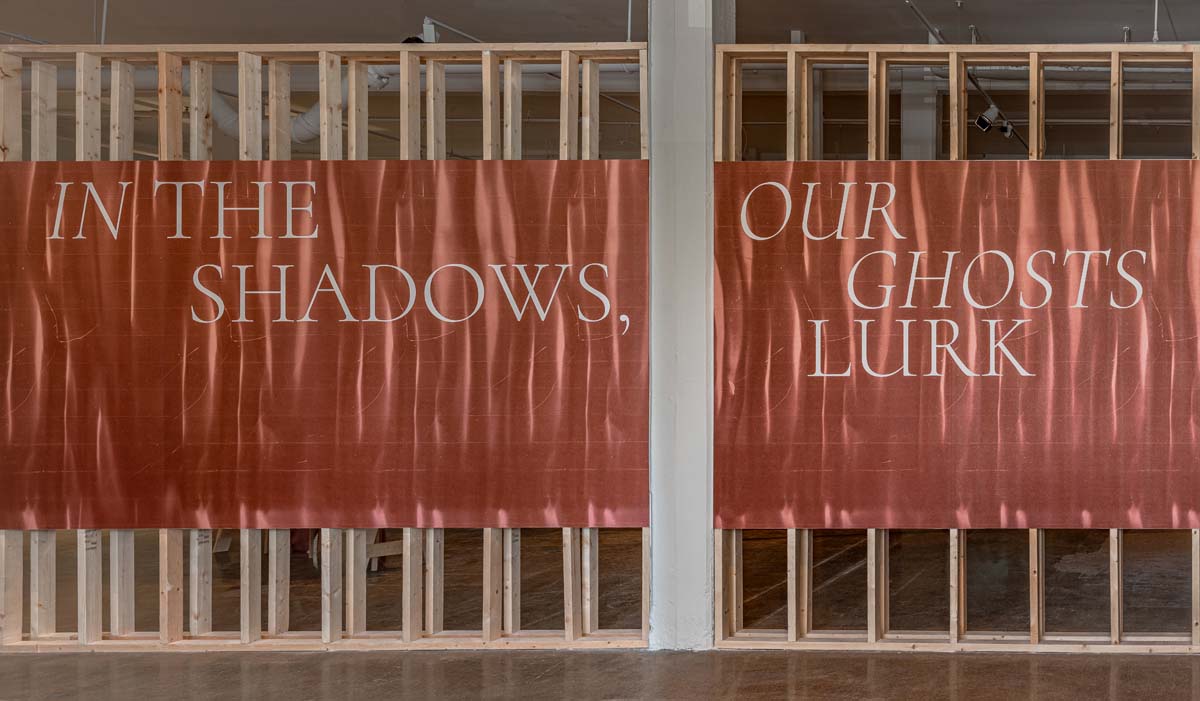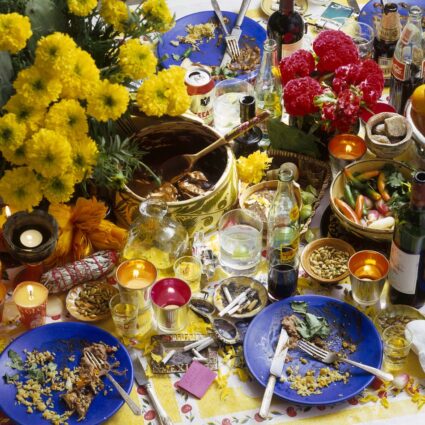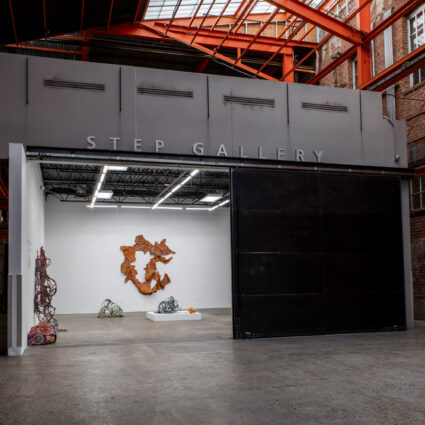Curator Fabiola Iza brings together eleven artists for an exhibition that investigates the shadowy corners of perception.
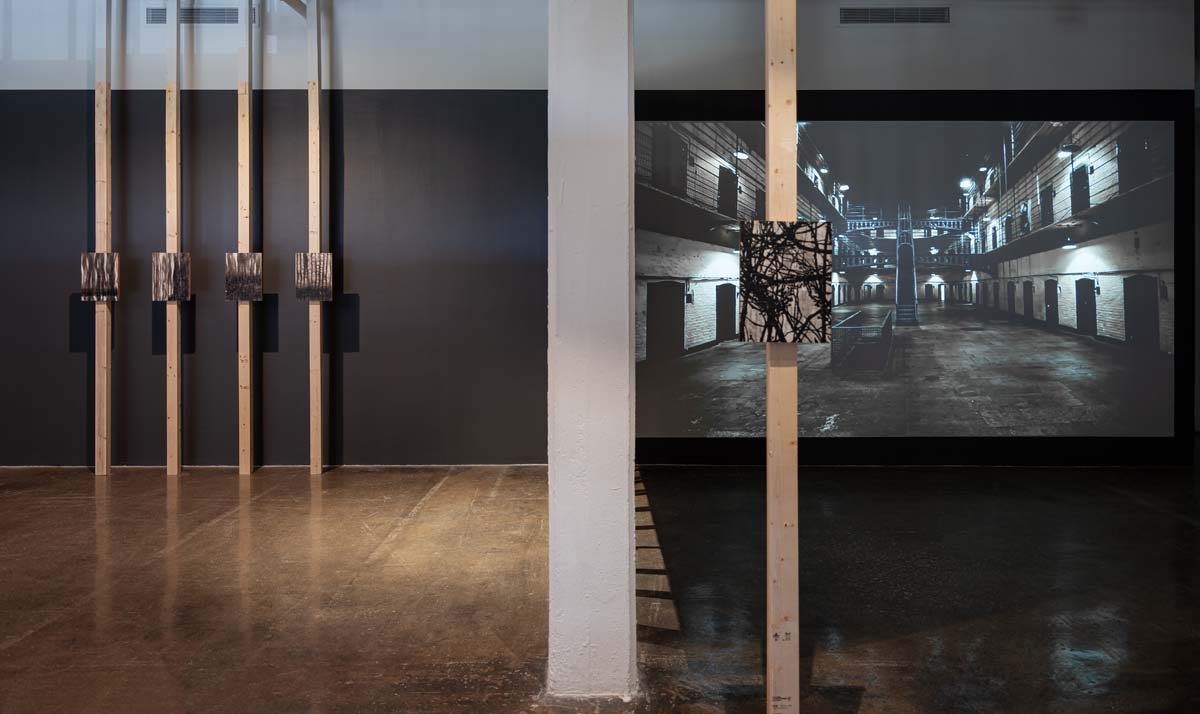
In the Shadows, Our Ghosts Lurk (En Las Sombras, Nuestros Fantasmas Acechan)
June 6–October 5, 2025
Contemporary at Blue Star, San Antonio
Bare wooden studs greet viewers of the title wall of In the Shadows, Our Ghosts Lurk (En Las Sombras, Nuestros Fantasmas Acechan). Unframed works hang on unpainted two-by-fours running floor to ceiling. Is the show under construction, still being installed? The exhibition design of Mexico City–based curator Fabiola Iza is a show in itself, challenging norms with innovative display methods that might have overwhelmed the small scale and quietude of the artworks, but instead hum in harmony with their elusive content.
In this exhibition of eleven artists, the small works by Daniel Monroy Cuevas quietly dominate. Made by affixing soot patterns on adhesive tape to wood panels, six are placed throughout the show. Every night a garden comes in through the window (Cada noche un jardín se mete por la ventana) (2023) hangs at eye-level, adjacent to Gaol (2010), a six-minute looping video by Oswaldo Ruiz. Cuevas’s soot piece reads like silhouetted tendrils of an overgrown garden, while Gaol shows the inside of the unpopulated Kilmainham prison in Dublin, an emblem of Ireland’s struggle for independence, starting in near-total darkness and illuminated one light at a time until the entire interior is revealed. These apposite works resonate with mysterious aftereffects of absence and neglect.
Virginia Colwell’s performance-based works are also prominent. Her 2019 video Anamnesis, made with Raquel Bañón Sodini, records blindfolded participants choreographed in movement and vocalization, directed to seek connection even as a primary relational sense is dimmed. Colwell’s soft sculptures of shelves and display cases, collectively titled Goodbye to All That (2014), appear as sketches in adjacent collages over photographs of protest marches, suggesting that they are to be held like wordless signs, as containers for imagined but elusive justice. I found Paloma Rosenzweig’s wool felt sculptures most striking, particularly Chiasma (2023), appearing as large eyeballs terminating in a clamping form and jarringly displayed overhead in a Plexiglas case to cast an ominous shadow on the floor beneath.
Overall, Las Sombras presents a subtle but thorough investigation of modes of perception. The show originated in Mexico City, where its curator referenced the panopticon. In South Texas, the exhibition creepily resonates with the current U.S. government’s virulent othering turn and obscuration of history, revealing revenants lurking in the increasingly shadowy corners of our collective vision.
